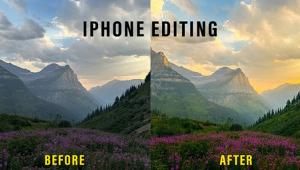THE UNBEARABLE LIGHTNESS OF BEING
I can’t really fault the experts when called to the plate for ducking and weaving when thrown a wild pitch, and this “prints too dark” problem has blind-sided everyone in the business except some professionals using sophisticated and expensive tools and techniques beyond the pale of what most enthusiast photographers can or want to afford. So you cannot expect a solution from them when they have not themselves experienced the problem of prints too dark.
In the last couple of weeks since one of my e-mails on this “prints too dark” was redistributed to a large audience I’ve received a lot of feedback and commentary describing a great diversity of perspectives on the problem. However the consensus definitely puts the blame on too bright LCD’s as the primary cause of getting prints that are too dark. That makes sense to me especially considering that the “prints too dark” problem has grown since and proportionally to the adoption of LCD’s for computer display purposes. Almost as much consensus exists for the idea that calibrating and profiling an LCD display to an aim point of a white luminance measurement and setting of 120.0 CD/m2 reduces the dark print problem considerably. A small contingent of responses from primarily color management consultants suggests the problem is the ambient lighting in the environment in which the computer display is used. Considering the problem seems to be greatest the brighter the LCD display is, this really seems unlikely unless we were talking about laptop users, and that is not the case in terms of the reports of problems on file, nearly all involved desktop displays.
The good news is that I just had an opportunity to test some software that is promising and pointing to a way to correct for the too dark print problem. It is at an early stage of development so there is still much that needs to be done to result in an effective solution. But what I have seen so far suggests that this “prints too dark problem” can be resolved. Keep your fingers crossed, all of you, as I will, hoping that soon this plight of digital photo printing will be lifted and we can look to better days ahead.
E-Mail: goofotografx@gmail.com

































